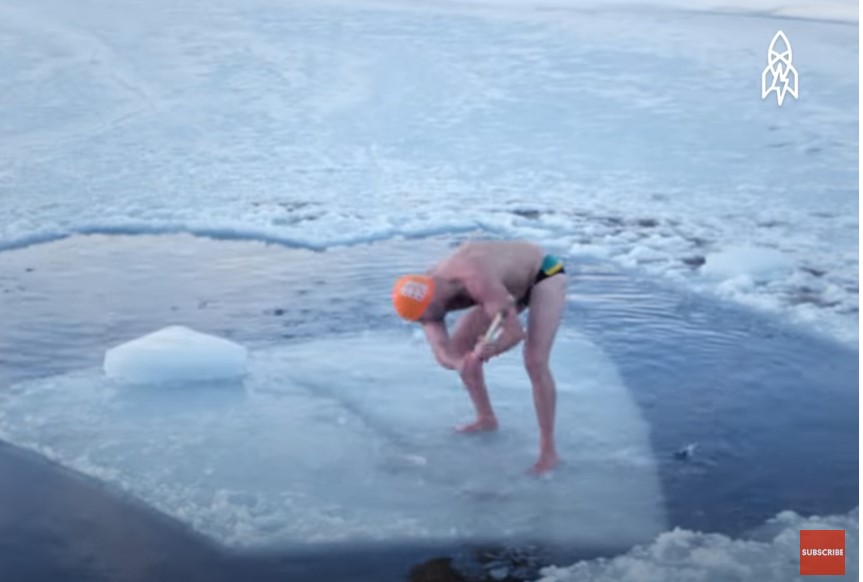The latest “health” fad is cold plunges. The hashtag #coldplunge on TikTok has over 1.1 billion views, and features thousands of videos of people shivering and gasping through a soak in frigid water.
The body-numbing practice is endorsed by celebrities, athletes and influencers and this only leads to more people jumping on the bandwagon. But is it really good for you?
There are many claims for its benefit: relieving muscle soreness, aiding with recovery after workouts, reducing inflammation and boosting immunity. Some report cold plunges also yield mental health benefits, like improving clarity and reducing depression or anxiety.
A cold plunge involves fully submerging the body in cold water — whether that be a bathtub, tank, pool or a natural body of water, such as a lake or the ocean. It’s also called cold water immersion or cold-water swimming. In some extreme cases people will participate in races in icy water, with temperatures as low as 39 degrees, where “every stroke can kill you”.
It’s not new, ask any of those hardy souls that take the Polar Bear Plunge on New Year’s Day, a tradition that started in Boston in 1904.
Even farther back, “Hippocrates, Thomas Jefferson, Darwin and Florence Nightingale were all doing cold water immersion,” says Mike Tipton, a professor of human and applied physiology at the University of Portsmouth at the University of Portsmouth’s Extreme Environments Laboratory.
The length of a cold plunge can vary depending on the water temperature and comfort level. The colder the water, the shorter the submergence should be, the experts note. In general, cold plunges typically last between five and 10 minutes, Colbenson adds.
As you can see in this video, you can gradually build up your resistance to the icy temperatures.
@superhumantroy Have you tried cold plunges before? 🥶🧊 #iceplunge #wimhofmethod #wimhof #coldexposure #superhuman #motivation #fitness #fitfam #fitnessmotivation #fitnessjourney #fittok #coldplunge #coldplungechallenge
The water should be no colder than about 53 degrees Fahrenheit or 12 degrees Celsius, at which point the risk of damage to the skin and tissues or other adverse events increases. The ideal temperature for cold water swimming is a bit warmer, or between about 65 to 75 degrees, but in the current fad some have plunged into water as cold as 40 degrees F.
It takes three to five minutes for the cold to penetrate beyond the skin, Dr. Kristi Colbenson, a sports medicine and emergency physician at the Mayo Clinic, says, at which point it starts to have a neuromuscular effect.
Tipton cautions that plunging for longer than 10 minutes can increase the chances of being physically harmed by the cold and could even result in death.
People have long touted the benefits of cold water but also warned of the risks, says Tipton, and throughout history it has been deemed both a cure-all and a health hazard.
From a physiological standpoint, the biggest benefit from cold water immersion seems to be improvement in recovery, the perception of pain and delayed muscle soreness, says Colbenson.
A systematic review published in the journal Sports Medicine in February 2022 suggested that cold water immersion was an effective recovery tool after high intensity exercises, specifically HIIT exercises, TODAY.com previously reported.
It also reduces inflammation. When the body enters cold water, this causes the blood vessels to constrict, especially in the extremities, to conserve heat at the core of the body near the heart, the experts explain.
“It slows down and inhibits blood flow to the legs and the arms and pushes (the blood) more towards the central aspect of the body,” says Colbenson. “In doing so, you decrease that natural inflammatory response that occurs after exercise.” This benefit however, is merely temporary.
On the downside, a cold plunge can induce a heightened state of stress and send us into “fight or flight” mode, Colbenson notes, and the body will release a surge of norepinephrine and cortisol, the stress hormone.
Also known as a cold shock response, the initial gasping, hyperventilating and increased heart rate after jumping into frigid water can be dangerous — but it may also be the basis of some of the physical benefits, says Tipton.

“The belief is that if you consistently expose yourself to stress in a meaningful and structured way, your body will actually respond by improving its ability to respond to everyday stress,” says Colbenson.
But take this with a grain of salt, as there is no evidence for such a claim. Indeed, the lack of credible scientific evidence seems to underlie every claim that is being made for taking a cold plunge.
There’s a right way and many wrong ways to do a cold plunge, the experts note, and certain people should avoid it entirely.
“We’ve spent probably 40 years looking at the hazards associated with going in cold water — from drowning to sudden cardiac death,” says Tipton.
For young, healthy people, that may be tolerable, she adds, but for people with any history of heart disease or cardiac problems (such as arrhythmias), it can be deadly.
People with any cardiac history, vascular disease or conditions like high blood pressure should probably avoid cold plunges, Colbenson says — regardless, everyone should check with their doctor before trying cold water immersion to be safe, the experts note.












